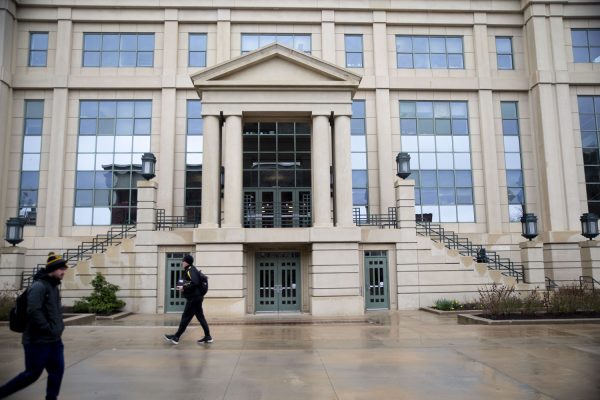Financial aid, retention linked
November 28, 2016
Financial aid remains a concern not only in discussions regarding college affordability but also in talks of retaining top students, according to a study from the Education Advisory Board.
The Washington, D.C.-based research firm found top college students were more likely to drop out if they lose financial aid.
Ed Venit, a senior director of the firm, said the schools involved in the study wished to remain anonymous, but the study was conducted with three public institutions — one being a flagship university — with a diverse student population of tens of thousands of students.
Even small changes in financial aid affected a student’s likelihood of persisting in earning a degree, Venit said. The study found that a loss of $1,000 in financial aid increased the risk of dropping out by 2.5 percent for students with a GPA higher than 3.0.
When the decline in aid reached $10,000, that percentage sharply increased to 19 percent for all students regardless of GPA compared to those whose financial-aid packages did not change much or at all.
To offset the burden to students and encourage them to complete their degrees, Venit said universities could think “more strategically” about how they deploy emergency funds.
“They can change the fate of a lot of students,” he said.
At the University of Iowa, affordability is especially an issue for nonresident students, who pay $27,890 to attend the institution compared to the $8,104 resident students pay for tuition.
Student leaders from the UI, Iowa State University, and the University of Northern Iowa all voiced concerns at October’s state Board of Regents meeting about disproportionately increasing tuition for nonresident students, acknowledging their contributions to the universities and the state as a whole.
Wendy Black, a nonresident UI student from Ohio, said Iowa faces challenges with keeping students in the state after graduating from college because they take their talent and skills elsewhere, seeking employment in places perceived to have more job opportunities. This trend should be encouraging state and university officials to do more to prevent disproportionate tuition hikes for nonresident students, she said.
“If a lot of your population is out of state, they’re going to home after they graduate,” she said.
For all students — residents and nonresidents alike — Black said she would appreciate more transparency about how tuition money is used.
“I do kind of know where all that money is going, but at the same time, I don’t understand how it is so much,” she said.
Cindy Seyfer, the senior associate director of UI Student Financial Aid, said her office understands the importance in consistency of financial aid from year to year. She noted little changes in the amount of financial aid can make a difference in retention.
“We have over time made changes to our scholarship program so if students get scholarships when they are admitted to the university … the scholarships will be there for them for eight semesters as long as they continue to meet the renewal criteria,” she said.
While Seyfer said there were no data about student retention related to academic-achievement and financial-aid changes specifically, there typically is a larger amount of federal dollars that go to nonresident students — who typically show more need for financial aid — mostly through loans.
She encouraged all students to reach out to the Financial Aid Office for assistance in planning for their educational expenses before they reach the point of considering to drop out.
“If students do what they need to do to meet the renewal requirements [for maintaining their financial aid], then we will do our part to continue to make it affordable for them,” she said.















